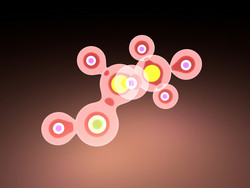Micromachined transducers for intracellular measurements
Conventional AFMs rely on a microscopic cantilever that interacts with the material to be imaged. Light reflected from this cantilever probe is measured by sensing the light beam displacement or by interferometry to determine how the probe interacted with the material. The EU-funded project UTMOST (Ultra-stable molecular force spectroscopy with micromachined transducers) aimed to address thermal drift of the cantilever due to changes in ambient temperature. Along with mechanical vibrations and surface stress changes, this is detrimental to AFM accuracy. To date, thermal drift is corrected using correlation methods and Kalman filtering, but a different approach is needed for single molecule force spectroscopy to measure folding and unfolding of proteins. Such drift compensation schemes may not work well in characterising biomolecules. In biomolecular experiments, the samples are delicate and precise control of force and tip-to-sample distance is necessary. UTMOST researchers have, therefore, proposed a new method that compensates for thermal drift by reducing or even eliminating the added amount of force exerted on the cantilever probe. Researchers developed micromachined transducers that cancel thermal drift when used together with microcantilevers. These transducers comprise a micro stage anchored to its substrate by bi-material and isolation legs that were designed to match thermomechanically the cantilever probes. Bi-material legs are made of two different materials with different values of the coefficient of thermal expansion. Due to this mismatch, these legs deflect under thermal fluctuations to provide for constant tip-to-transducer distance, so that the force applied on the biomolecules stays the same at all times. On the other hand, the isolation legs optimise the heat transfer rate. They also determine the stiffness of the transducers in order to ensure that any deflection of the micro stage is due to thermal fluctuations and not biomolecular interactions. In the new method, displacement of the transducers is measured by optical means simultaneously with the cantilevers to control the force on biomolecules accurately. Changes in the ambient temperature are compensated for rapidly to allow for long-time scale measurements. The device and method resulting from the UTMOST project have strong potential for commercialisation. A United States patent was awarded in August 2012. Furthermore, research carried out on AFM methods resulted in a Turkish patent application.







